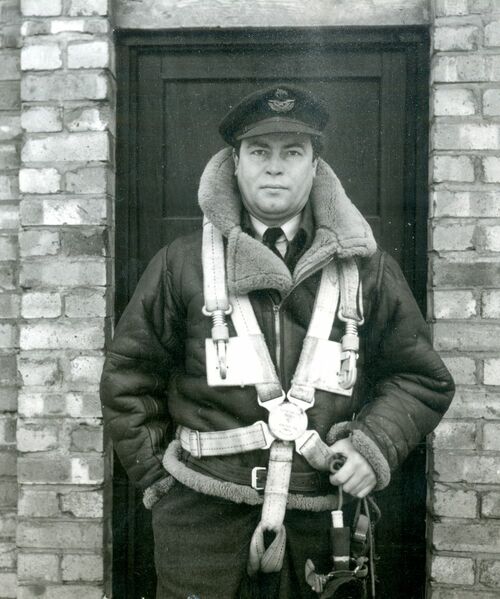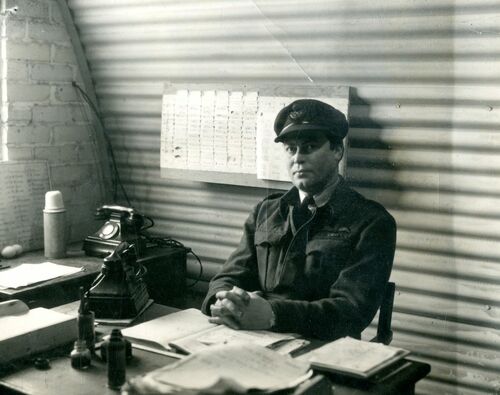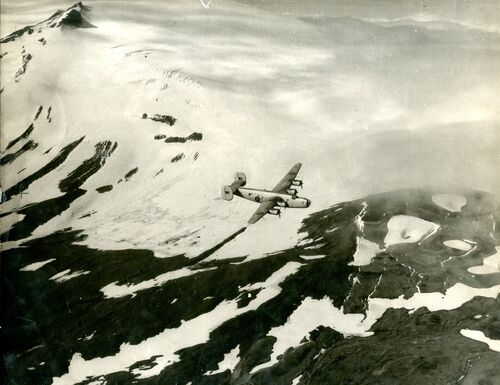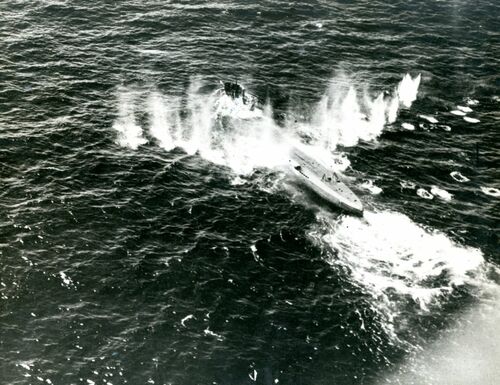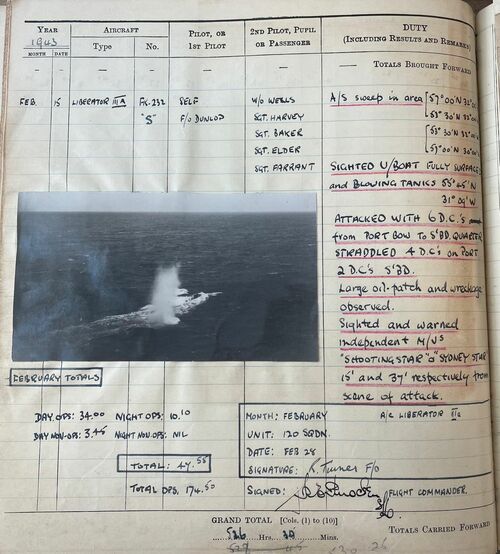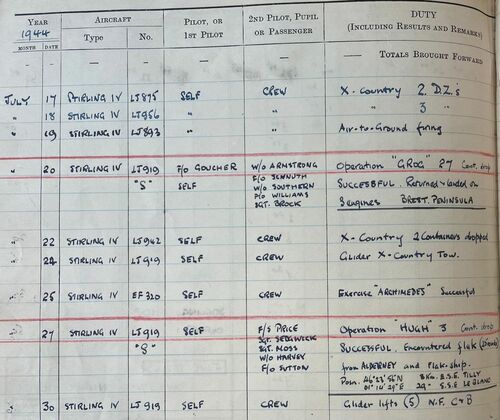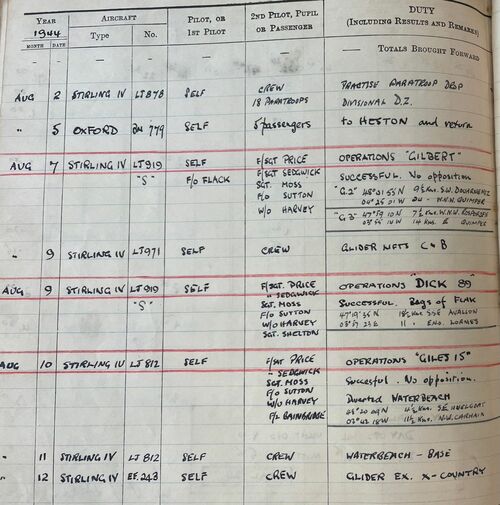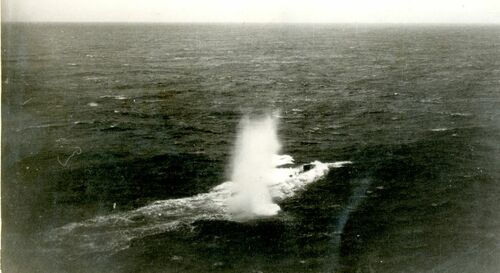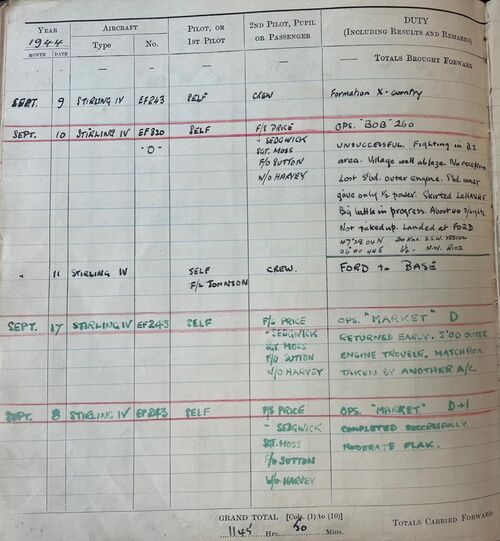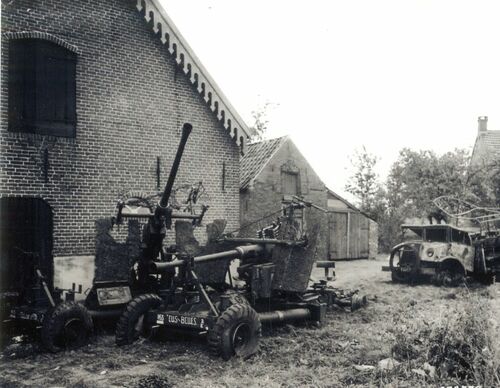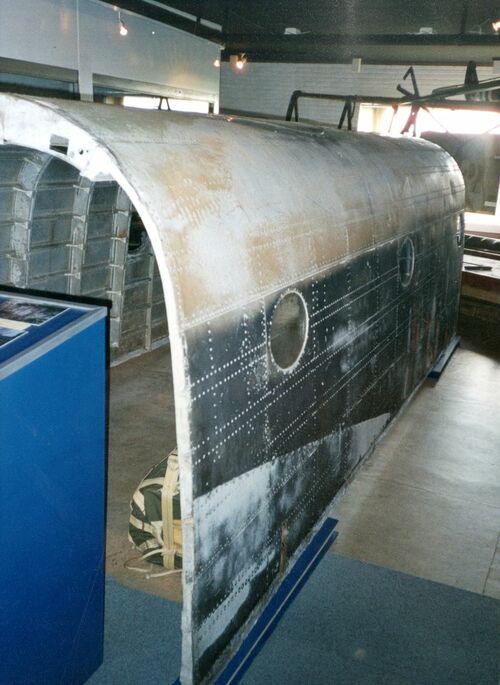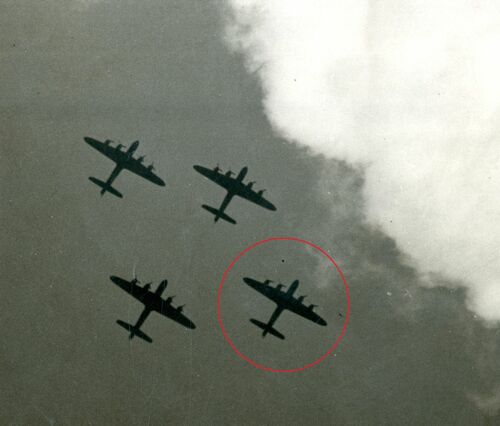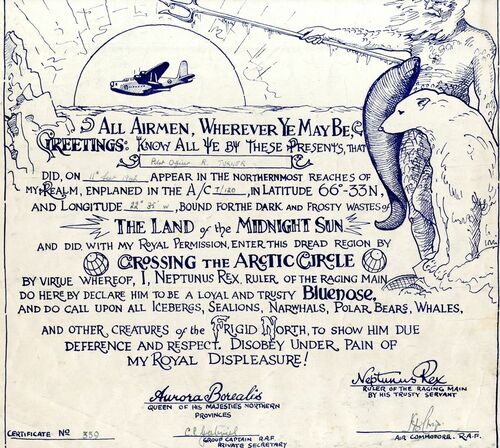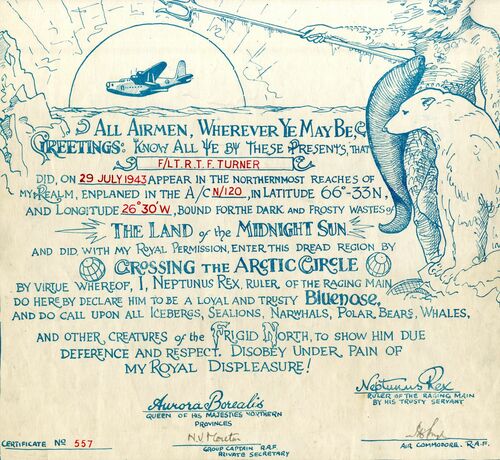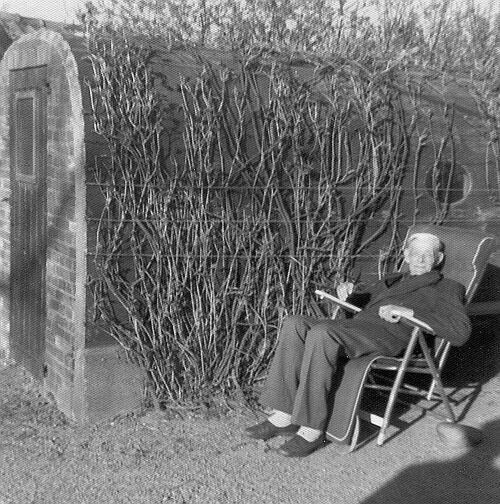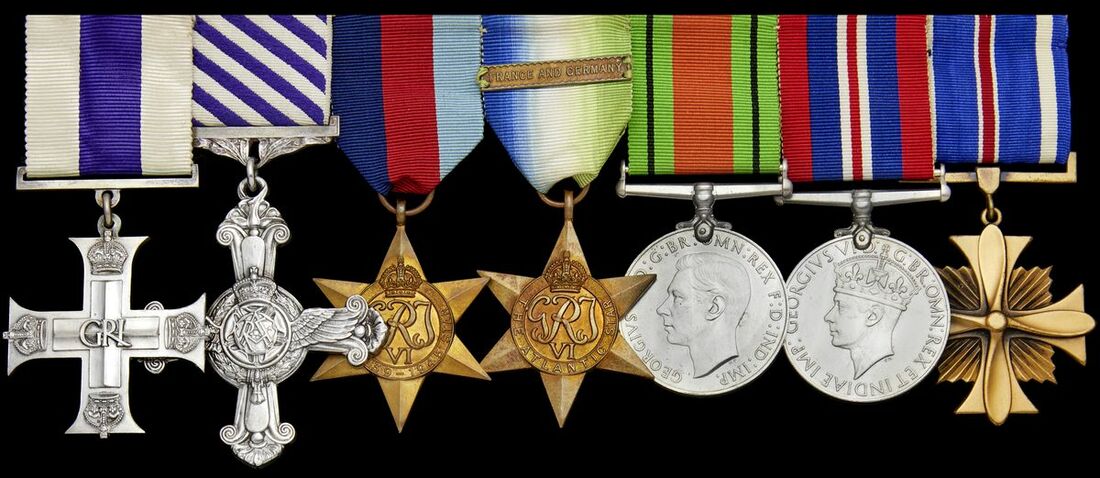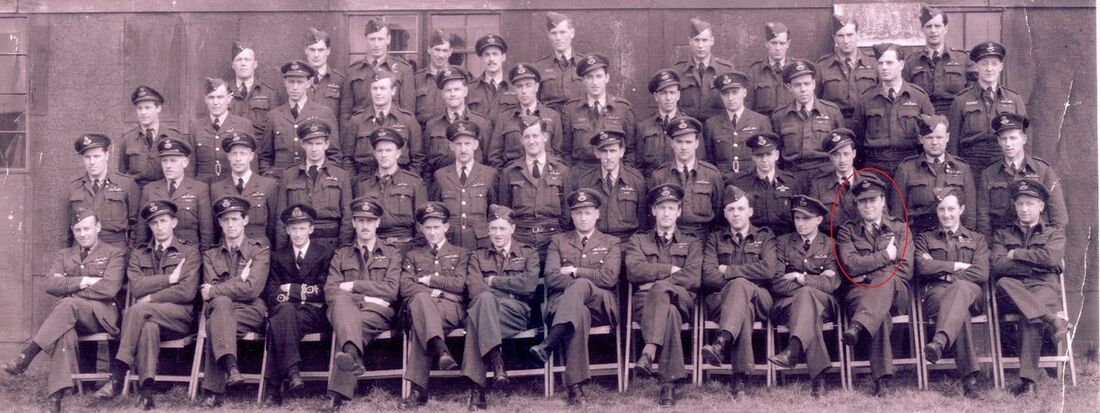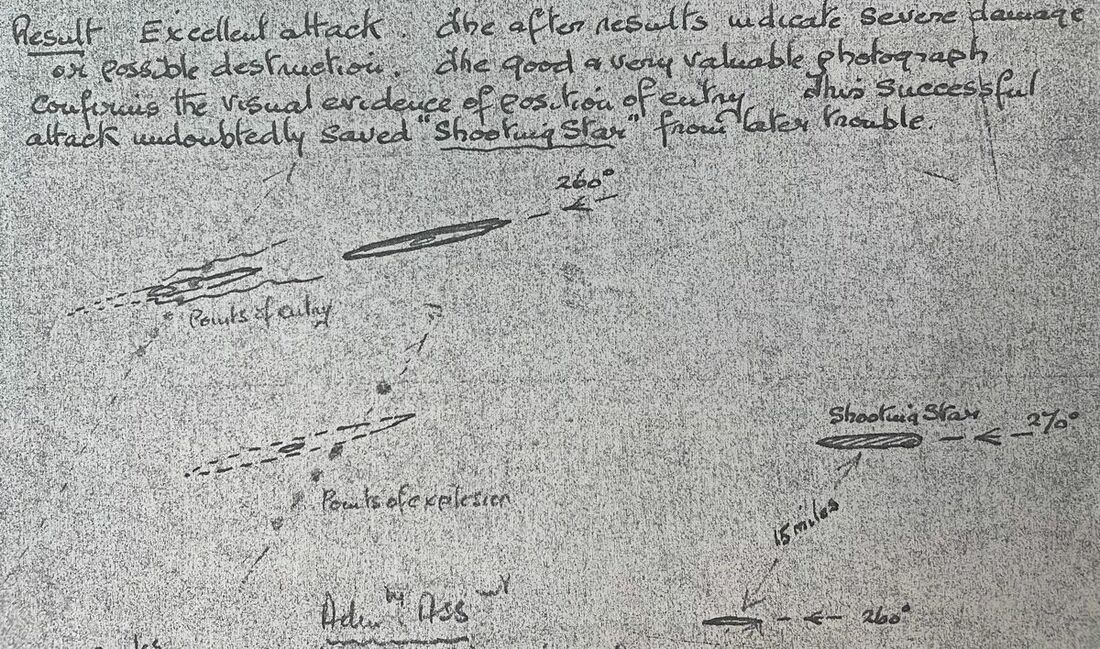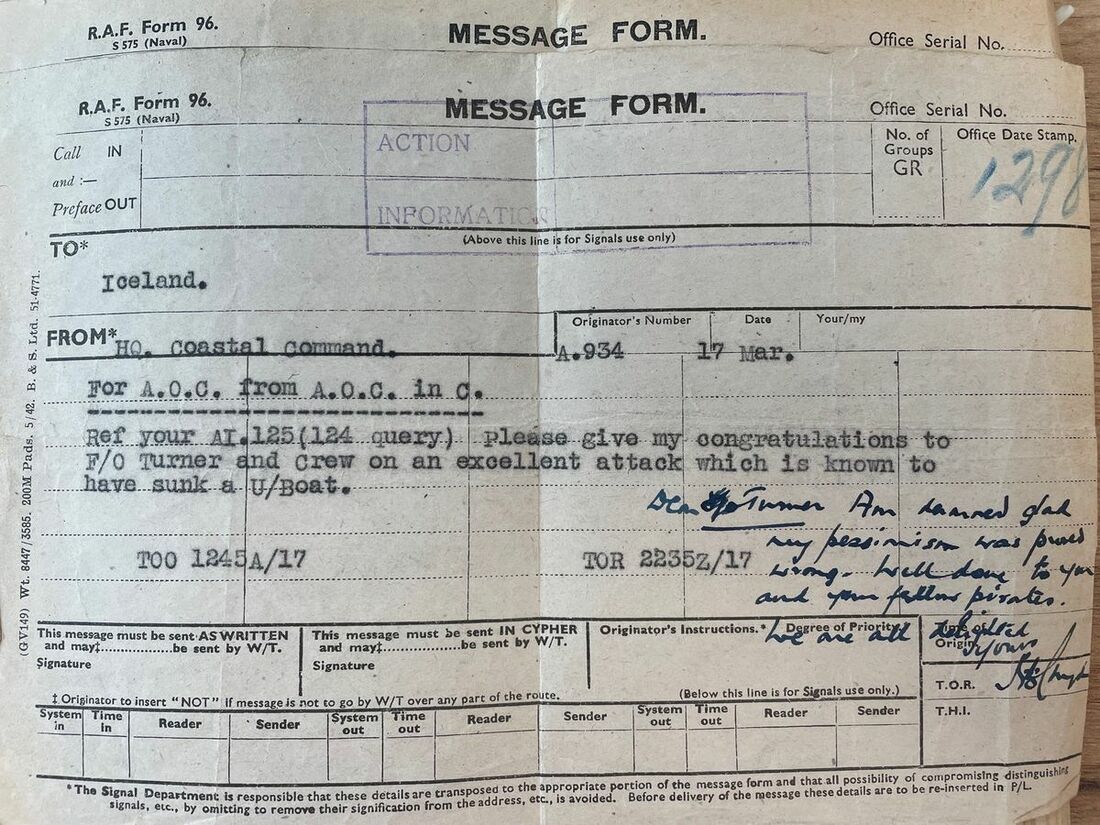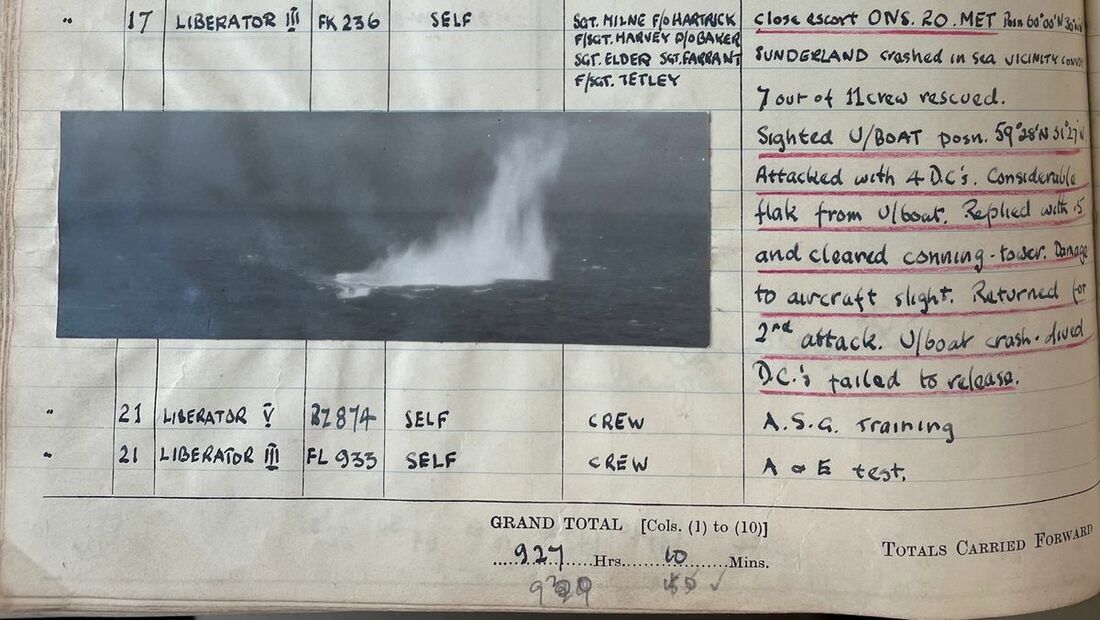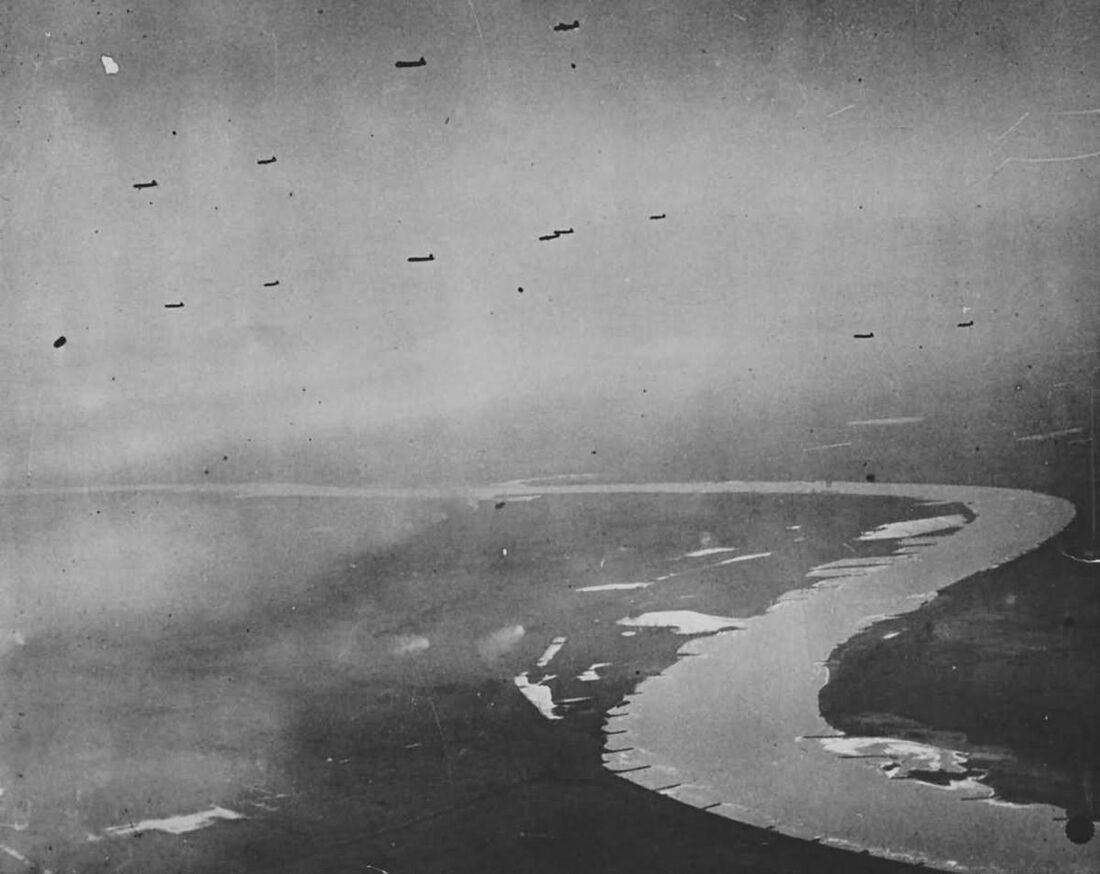Auction: 23002 - Orders, Decorations and Medals
Lot: 124
Sold by Order of a Direct Descendant
'Flight Lieutenant R. Turner, a Londoner, had gone ahead of us to the road south between Uden and Veghel and had run into a road blocked by German tanks and had fought his own private battle on the ground for 28 hours to get back out of the trap. He took command of 30 men, four of them his own crew and the others Bofors gunners. They destroyed a Tiger tank and an Armed Car and held on with the loss of four killed and eight wounded until British tanks relieved them.'
So wrote Edmund Townshend, War Correspondent for the Daily Telegraph - who had also been shot down during Operation Market Garden, on the remarkable action which won Turner the M.C.
The outstanding Operation 'Market Garden' M.C., 1943 Coastal Command D.F.C. and Operation 'Varsity' American D.F.C. group of seven awarded to Wing Commander R. T. F. Turner, Royal Air Force
He opened his account with No. 120 Squadron (Coastal Command) who operated out of Iceland and scored a 'kill' when by putting the U-225 to the bottom after hitting her with six depth charges in a daring low altitude strike
Joining No. 299 Squadron, he flew on a plethora of Ops to drop containers into Occupied France for the French Resistance and S.O.E. operatives; his finest hour came during Operation Market Garden, having made several successful drops over Arnhem, he was shot down on 21 September - as evidenced by the above account, he gave more than his fair share to assist the ground operations
He would be appointed to the command of No. 196 Squadron, who he led in towing Gliders on Operation Varsity - the crossing of the Rhine - adding the American D.F.C. to his laurels, before returning Prisoners of War home and transporting Airborne Troops to Norway to disarm the German Forces at Stavanger - by War's end he had nearly 1350hrs and some 61 Ops on his Flying Log Book
Military Cross, G.VI.R., the reverse officially dated '1945', on its investiture pin and in its Royal Mint case of issue; Distinguished Flying Cross, G.V.R., the reverse officially dated '1943', on its investiture pin and in its Royal Mint case of issue; 1939-45 Star; Atlantic Star, clasp, France and Germany; Defence and War Medals; United States of America, Distinguished Flying Cross, in its case of issue with riband bar and lapel pin, with the torn name label to the base stating 'A/[Win]g Comm. Reginald T. Turner', campaign medals mounted as worn, nearly extremely fine and quite possibly a unique combination of awards for the Second World War (7)
Approximately 68 M.C.s awarded to the Royal Air Force for the Second World War, the great majority of these awarded for Escape and Evasion rather than actually engaging the enemy in combat.
Approximately 42 M.C.'s awarded for Operation Market Garden, this a unique award to the Royal Air Force.
M.C. London Gazette 13 July 1945. Although no official Recommendation has survived, the details of this award are perhaps best drawn from the pages of By Air to Arnhem - The Official Account of the British Airborne Divisions:
'Conditions along the road leading through Grave and Nijmegen to the outskirts of Arnhem can be gauged by what happened to Flight Lieutenant Turner, D.F.C., the Pilot of a Stirling employed in dropping supplies to the Airborne troops. On September 21st he was shot down near Nijmegen and presently arrived there on foot with his crew. Here they were given food, a three-ton lorry, and an order to make for Eindhoven. Five miles from that town they were told that two German tanks - Panthers, it was thought - and a body of S.S. troops were moving against the road from the north-east and would arrive at any moment.
"We had two revolvers and a Sten gun between the nine of us," said Turner. Judging this armament insufficient with which to attack tanks, the party drove to Veghel, a small village close by, where they presently fell in with "an Army Lieutenant and three Bofors guns." All at once they returned to the main road, determined to fight their way through.
The opportunity to do so soon arrived, for the German tanks made straight for them. The first was knocked out by the Bofors firing at a range of 400 yards, but in the ensuing battle with the second and the S.S. infantry accompanying it, the Army Lieutenant became a casualty, two of the three Bofors were destroyed, and the available ammunition for the third fell to fourteen rounds. So the crew of the Stirling moved off the road once more and joined some thirty British infantry who were without Officers but had machine-guns.
Though lacking all experience in ground warfare, Turner at once took command. Tiger tanks, suddenly appearing, drove the party back to Veghel, where the lorry, into which they had all clambered, was ambushed and destroyed. Undismayed, the survivors lined a ditch by the roadside, held off the enemy for ten hours with small-arms fire till darkness fell, and then retired with their wounded to a neighbouring house, whose owner gave them all the food he had - one slice of bread and butter and one apple to each man.
By then there was almost no ammunition left, and they therefore lay quiet listening to the Germans fifty yards away, who, badly mauled, made no further attack. Late in the next afternoon the advanced guards of the leading British Armoured Division arrived, and Flight Lieutenant Turner was able to hand over his command, abandon fighting on land, and return eventually to the air, a more familiar element.'
D.F.C. London Gazette 1 October 1943. The Recommendation, for his work with No. 120 Squadron, Coastal Command, out of Reykjavik, Iceland, confirms he flew 46 Operational Sorties in 430 Operational hours. The Citation states:
'This Officer has carried out three attacks on U-Boats, one of which, on 15 February 1943, was assessed as 'SUNK'. Since the winter of 1942-43, Flying Officer Turner has been operating as Captain of a V.L.R. Aircraft in the North Atlantic based in Iceland.
His keenness, enthusiasm and devotion to duty are of a high order, and on frequent occasions he has demonstrated his determination to carry out his duties in the face of very adverse weather conditions.
Flying Officer Turner has, at all times, displayed the aggressive spirit and perseverance so necessary in a Pilot of Coastal Command.'
The A.O.C. remarked:
'Very strongly recommended. This Officer has been magnificent in his contribution against the U/Boat and a fine example to all.'
United States D.F.C. London Gazette 14 June 1945. The Citation states:
'Wing Commander Turner (Pilot; Flying Hours 630) has participated in a number of missions in conjunction with the United States Army Air Forces. On 24 March 1945, he led his Squadron across the Rhine, towing Horsa Gliders of the Airborne Division.
Wing Commander Turner has always displayed the greatest keenness and enthusiasm in undertaking operations against the enemy.'
Reginald Thomas Frederick Turner was born on 11 August 1911 at Devonport. He had been married to Rose Jager at Chelsea in 1937 and with the outbreak of the Second World War, Turner attested at Euston House on 4 September 1940. At that time he was an artist living at 44 Compayne Gardens, West Hampstead, London. Commissioned Pilot Officer on 4 November 1941, he had taken his first flight in Tiger 4810 from 25 EFTS on 22 May 1941. Having gone out to Rhodesia in the course of his training, Turner joined No. 120 Squadron in May 1942.
U-Boat killer - D.F.C.
The unit were reformed as part of Coastal Command in Northern Ireland on 2 June 1941 at RAF Nutts Corner, operating with Liberators to combat the U-Boat threat in the North Atlantic. His first Op, an escort, came on 12 May 1942, whilst his first contact with an enemy submarine came on 27 July 1942, when taking off in LV344 and searching for a U-Boat, when they discovered '...abandoned raft; oil-tank; timber; bubble-trail.'
The Squadron received the first Mark I Liberators in June and began flying nine of them in September from RAF Aldergrove, Northern Ireland and RAF Reykjavik, Iceland. The number of Liberators in September 1942 had increased to six Mark I, two Mark II, and three Mark III. No. 120 Squadron remained the only Coastal Command Squadron flying VLR (Very Long Range) Liberators in February 1943 with five Mark I and twelve Mark III.
September 1942 saw Turner put to good work, going up to Iceland on 4 September and flying no less than 9 Ops that month, on sweeps and escort duties. He was advanced Flying Officer on 1 October 1942. Further Ops followed but perhaps his finest hour with Coastal Command came on 15 February 1943, when flying in Liberator III 'S' FK-232. His Log Book gives a summary of the events off Greenland:
'Sighted U/Boat fully surfaced and blowing tanks. Attacked with 6 D.C.'s [depth charges] from Port Bow to S'Bd. Quarter. Straddled 4 D.C.'s on Port. 2 D.C.'s S'Bd. Large oil-patch and wreckage observed. Sighted and warned independent + MV's Shooting Star and Sydney Star 15' and 37' respectively from scene of attack.'
It turned out that he had downed U-225, commanded by Oberleutnant Wolfgang Leimkuhler, who was on her second patrol. She sailed from Brest on 2 February and formed part of Group Ritter that was attacking convoy ON166 and at that point had been thought to have sunk five ships. It was Turners 19th Op and one that required great skill and courage to deliver his attack. He chose to come down to 70ft to make his attack, straddling the U-Boat with his depth charges, which were set to shallow depth. Once they detonated, oil and air bubbles were seen on the surface, with the slick forming over a 150-200ft patch. The action was also caught on camera, with the striking images bringing events to life. The A.O.C. sent a telegram to congratulate him:
'Please give my congratulations to F/O Turner and Crew on an excellent attack which is known to have sunk a U/Boat.
[In ink] Am damned glad my pessimism was proved wrong - Well done to you and your fellow pirates. We are all delighted.'
Further scrapes with the U-Boats followed, attacking with 4 depth charges, spaced at 45ft, on 18 March 1943 (21st Op) and again on 17 October 1943 (45th Op). On that latter occasion, he went in despite heavy flak - that damaged his aircraft - from the U-Boat, himself coming back with .5 fire that '...cleared conning-tower' and went back for a second attack that forced the U-Boat into a crash-dive. It was probably lucky to escape, for his depth charges failed to drop on the second run. This event was also captured on camera.
Turner, tour expired with 46 Ops, was duly rewarded with his D.F.C. and was promoted Flight Lieutenant on 4 November 1943, the day before he left No. 120 Squadron. It was due to the fine efforts of men like Turner that the Squadron sank 14 U-boats outright; and was credited with a share in sinking three more, plus eight damaged. They had the highest kill total in the whole of Coastal Command.
Under cover of darkness
Posted for further training and conversion to the Stirling, Turner would see plenty more action before War's end. He joined No. 299 Squadron and was soon thrown back into the fray, doing 'drops' into Occupied France to provide vital assistance to the Special Operations Executive and French Resistance. His first was on Operation 'Grog' 27 on 20 July 1944, a container drop into the Brest Peninsula, landing home on three engines. Another followed on 27 July, for Operation 'Hugh' 3, this time encountering flak (25 rounds) from Alderney and flak ship before dropping his container between Tilly and Le Blanc. Turner got to his half-century of Ops on 9 August, on Operation 'Dick' 89, dropping his container between Avallon and Lormes but in the face of 'bags of flak'. He was kept plenty busy, being intercepted by an enemy fighter during Operation 'Paul' 108 on 20 August and also being tracked during 'Osric' 52 on 25 August when dropping his container between Chiny and Florenville. Turner had flown 9 Ops of this nature, the final of these coming on 10 September 1944, on 'Bob' 260, dropping his container between Yesoul and Rioz but losing his starboard outer engine and only having half power on the inner; he limped Stirling IV EF320 home to land at Ford.
Operation Market Garden - M.C.
Plenty of ink has been spilled in the telling of this famous tale, yet Turner would write his name into the history books for his part in those fêted days. No. 299 got their final briefing at Keevil at 0800hrs on 17 September to let them know they would be making the drop, towing gliders into Arnhem. He would get 'wheels up' at 1015hrs in Stirling IV EF243 but was plagued by issues to his starboard outer, releasing his glider over base, both made a safe landing.
Their D+1 briefing took place at 0830hrs and again in EF243, Turner took to the skies at 1130hrs, meeting 'moderate flak' over Landing Zone 'Z', he made a successful release of his glider, which carried 3 Troops, 1 Jeep, 1 Trailer and 2 motorcycles. He made it back to base at 1700hrs.
On D+2 Turner led the Squadron, being the first to get into the air at 1213hrs, this time however he met an '...enthusiastic Reception Committee organised by Germans [who] put up big show of flak.'
Not to be stopped, he made the drop at Landing Zone 'L', the glider containing 3 Troops and 2 Jeeps and also spotting gliders burning on Drop Zone 'Z'. He made it back at 1733hrs. Rested on 20 September, he was once again detailed for another trip to Arnhem on D+4, 21 September, this time in LK645. Having taken off shortly before noon, it is known he was detailed - and was successful - to drop 24 containers and 4 panniers in the vicinity of the Hartenstein Hotel, supplies which were gravely needed by that time. He did not make it back to base and initially his Flying Log Book was inscribed '-MISSING-' by a comrade. He was able to latterly add the following:
'LIKE HELL!!! Crash-landed 10m. W. of Nijmegen. Arrived Keevil 28:9:44.'
The story of what followed is perhaps recorded in his M.I.9. debrief of his exploits, that was recorded upon his safe return:
'Our journey had been quiet until we crossed the Rhine over the DZ when very heavy light and medium Flak concentration opened up, followed by enemy fighters who were waiting outside the DZ area to catch aircraft who dodged to get in. We had no fighter cover, until air cover arrived later and the enemy dispersed.
While over DZ we were hit by Flak and the tail caught fire, forcing the rear gunner to bale out, after attempts made been made to get him out. I continued course, but the fire got out of control, so I chose a position in our near our territory and crash landed. No-one was hurt and the secret equipment was destroyed.
Dutch peasants came up, welcome us effusively, told us our position and that the British were coming up. They took us to a house, fed us and contacted the underground, who took us to a Army contact for crashed air crews, who put a guard on our aircraft. We were sent to 30 Corps HQ via Grave for the night.
Next day 30 Corps gave us a lorry with a driver and one armed escort to go to Eindhoven in which were various other RAF and Army Airborne personnel. We were halted by an MP who said only priority cars could go through Veghel as the situation was not good there.
Civilians then warned us some Panzers were approaching from about a mile to the east, so as considerable traffic had to pass towards Veghel, I decided to go through ourselves.
On the way beyond Mariahaile we met an Army officer with three Bofors, who wanted to go forward to prepare an ambush for anything he could find. I warned him about the Panzers coming up behind us but he went on and ran straight into them. He returned to our party with one Bofor trailing behind his Jeep, having lost two guns and all his ammunition trucks, and with about 25 men on his Jeep and on foot.
He asked me to help and advise him, so we returned to Mariahaile where he set up a gun position by the road, and I took charge of the spare troops, which I spaced out to observe an all around defence, and a spotter was sent to the church steeple.
The Germans opened up with M/G fire from the point which they had now reached, to which we replied with M/G fire and two rounds of Bofor with no effect.
W.O. Harvey and Dvr. Brackman of my crew decided to evade on their own at this point and left the party, as did Hartman, Greenweell and McQuiggan who were in the lorry party and who went into a house in the village.
Civilians then told us some Panzers and 300 S.S. were in position 5 miles S.E. and the church tower spotter returned to say two tanks were coming up on our left flank from N.W.
The Army Bofor officer said he was going back into Veghel in his Jeep and asked me to take charge of his surplus men in my lorry. When I had all his men in my lorry he passed us in the direction of Veghel taking with him the Bofor and one full crew behind his Jeep. I did not see him again.
Before we reached Veghel we were ambushed by M/G & snipers, who hit the lorry and turned it over into a ditch. All the men fell in a heap on top of me but I shouted to them to get out into the ditch as quickly and as orderly as possible and NOT TO FORGET THEIR WEAPONS. Four men were killed and eight injured in the process but I was crushed and temporarily unable to use my limbs, being led in the upturned lorry with Cpl. Strotson.
The men were demoralised and bunched into the ditch, so I shouted an order they were to open out and take up some position. The Snipers had the position covered as whenever I tried to get from the lorry they riddled it, although I jumped for it later. There was some exchange of fire, and the Germans threw over two grenades which did not get us.
They opened up again with M/G and I saw someone putting up a white handkerchief which one German acknowledged. I shouted several times they were to take it down, another party in the ditch who had not seen the flag opened up on the German and the flag came down. Two American O.R.s joined us from a field who said the situation was confused but could not give us any position to link up, and left. We had little ammunition and were not certain of the German Snipers position, so decided that everyone should keep low and quiet to prevent further casualties, after which the enemy ceased fire.
The Army Sgt. made a recce but was unable to make contact, so I decided to evacuate the men in small parties to a farmhouse in the evening, remaining with the Sgt. until nightfall when we assisted the wounded in.
At the farm the wounded were bedded down and a guard roster set up. There was much activity outside and I could hear Germans about, so as we were very short of ammunition I gave instructions that everyone was to keep quiet, our position was to remain dormant and that there was to be NO firing unless we were discovered and directly attacked. F/Sgt. Sedgwick of my crew left on his own during the night. We remained there all night and next day, under heavy shell fire. This farm was the only house in the vicinity that was not hit, and although heavy fighting went on all around, no-one came to the farm or knew we were there. When the Guards Armoured Division came through I contacted a tank who sent RT message for ambulances. I left the Army troops in charge of their Sgt. to take them to Veghel, and took my RAF party back to 30 Corps HQ where we remained overnight. Next day we were sent to Brussels.'
He never thought to mention the fact that they had taken out a Tiger tank in the battle, his first priority was elsewhere. Having made it back to base, he was duly rewarded with his Military Cross. He was promoted Squadron Leader on 27 October 1944 and posted as 'A' Flight Commander with No. 190 Squadron.
Varsity - American D.F.C.
Turner made his next Op, his 60th, on 29 February 1945, on Operation 'Dudley' 8 and faced 10/10 cloud at 200ft over the drop zone between Almelo and Cotmarsum. It would be his only Op with No. 190 Squadron as he was made Commanding Officer of No. 196 Squadron on 26 February, the day he was made a Wing Commander. He would lead his Squadron on Operation Varsity - the crossing of the Rhine - on 24 March 1945. Flying PW392, with Captain Strathhern as Glider Pilot, he made a successful drop and the glider made it to its Landing Zone north-east of Wesel. He was rewarded with the American Distinguished Flying Cross, one of 209 awards to the Royal Air Force for the Second World War.
He would assist in transporting ex-Prisoners of War in April 1945 and soon after VE-Day, was detailed to fly into Stavanger with Troops of the Airborne Division to disarm the old enemy and occupy to ensure peace. On 25 May, he even took in some sightseeing, his Flying Log Book noting '...Visited scene of battle Nr. Veghel' and was re-united with Bofors No. 163 2E 'Ells-Belles' - the scene was captured with a striking photograph.
After VJ-Day, Turner was also required to fly into Persia and onto India to assist in returning troops home. His final flight came on 3 November 1945, at which point he had a shade under 1350hrs on his Flying Log Book and 61 Ops to his name, besides the three awards he earned during the War. Turner had issue of two children from his marriage although his wife died in March 1943. He re-married Muriel Price in 1955 and she would go on to become Baroness Turner of Camden. The Wing Commander died in Camden in April 1995.
Sold together with the following original archive comprising:
(i)
His Pilot's Flying Log Book (Form 414), covering his entire career, with good entries and several images and qualifications pasted in.
(ii)
His Royal Air Force CONFIDENTIAL File, with 'Extracts from Field Reports', giving good details on his 'behind the lines' drops, 16 sheets in total, a good original source.
(iii)
Telegrams of congratulation regarding his awards and his original copy of By Air to Battle.
(iv)
His two large-format Certificates for Crossing the Arctic Circle, dated 11 September 1942 (No. 359) and 29 July 1943 (No. 557), together with a map of Iceland.
(v)
Various photographs, including images of the site his M.C. was won, besides copied research.
The wreck of his Stirling was excavated and initially used as a garden store for some time. Thankfully it was identified and can now be visited as part of the collection of the Vliegbasis Deelen Museum, near Arnhem.
Subject to 20% VAT on Buyer’s Premium. For more information please view Terms and Conditions for Buyers.
Sold for
£36,000
Starting price
£12000


